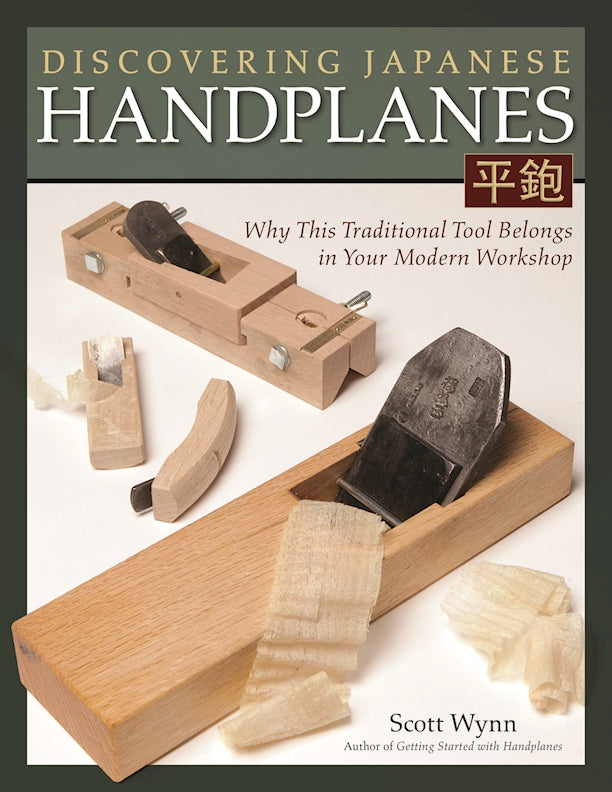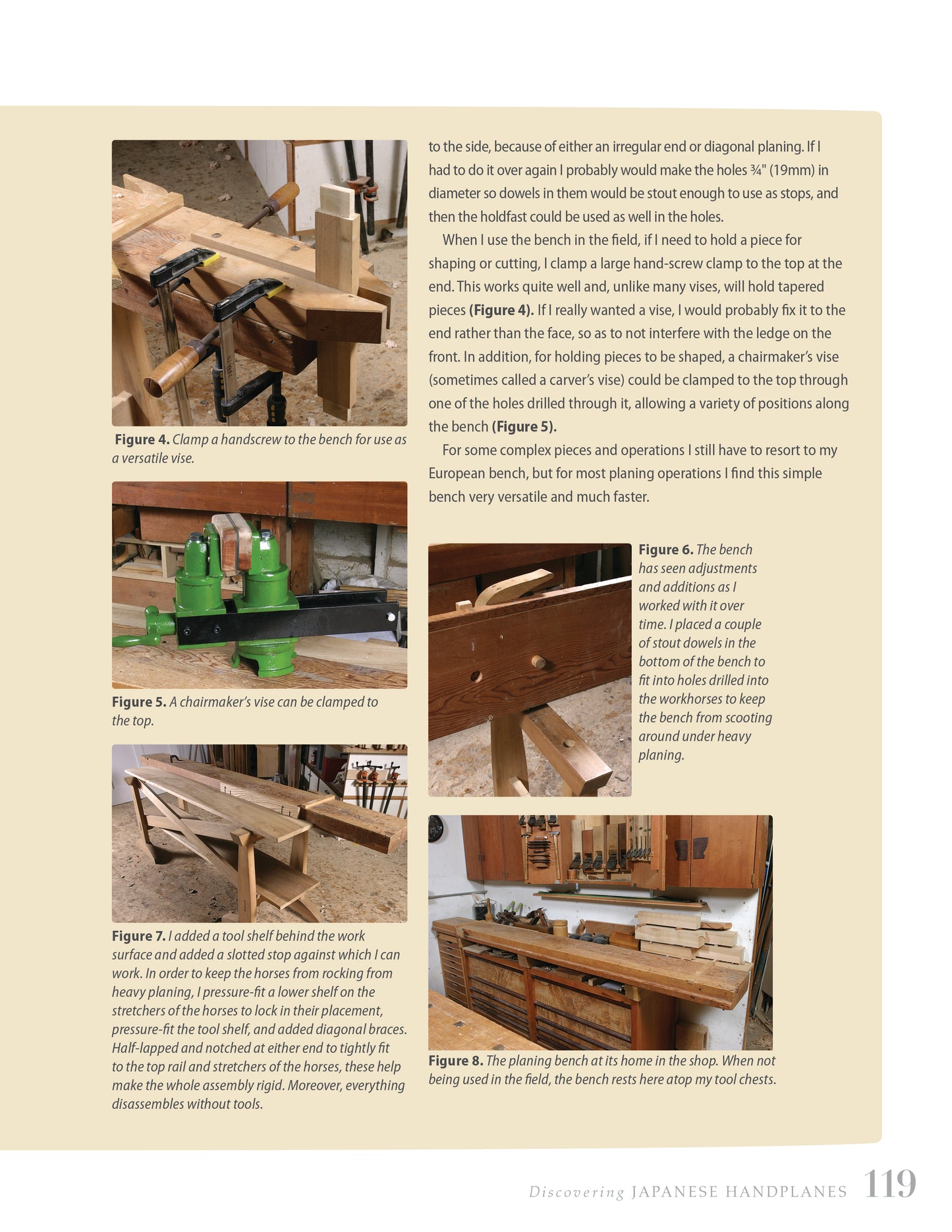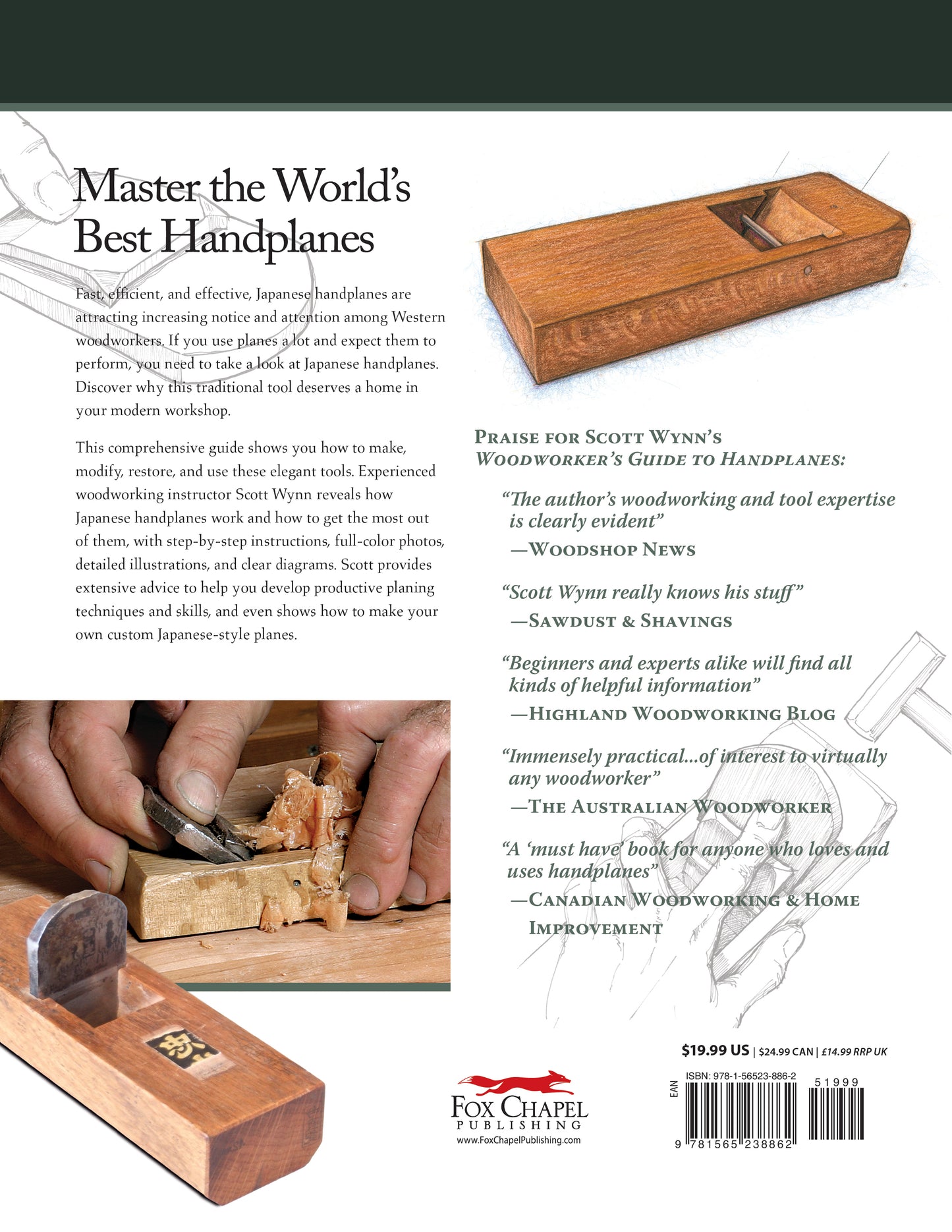Skip to product information
-
Media gallery  Media gallery
Media gallery
-
Media gallery  Media gallery
Media gallery
-
Media gallery  Media gallery
Media gallery
1
/
of
3
SKU 8862
Discovering Japanese Handplanes
- Regular price
- From $19.99 USD
- Regular price
-
- Sale price
- From $19.99 USD
- Unit price
- / per
-0%
Couldn't load pickup availability
Description
Description
Fast, efficient, and effective, Japanese handplanes are attracting increasing notice among Western cabinetmakers, carpenters, and woodworkers. These tools are meant to be used, used hard, and produce rapid, excellent results. Author and woodworking instructor Scott Wynn shows you how to choose, set up, maintain, and use these versatile tools to achieve stunning results. Japanese blades are arguably the best in the world, and Scott shares his methods for keeping those blades sharp. Japanese-style planes are also quick to build, and Scott shows how to make your own custom plane in a special section. Discover why this traditional tool has a home in your modern workshop, with step-by-step instructions, full-color photos, detailed illustrations, and clear diagrams.
Details
Details
| Pages | 168 |
|---|---|
| Publish Date | 2017-11-07 |
| Size | 8.5" x 11.0" x 0.37" |
| Author | Scott Wynn |
Reviews
Reviews
C
CanadianWoodworking.com
Perhaps you're new to woodworking and wondering what all the hype is about Japanese handplanes. Are they any good? What makes them different from Western style planes? How do you use them? What would you use them for? Are they time consuming to maintain? Or maybe you've been woodworking for some time and have decided to give them a try.
Either way, this book is for you.
Scott Wynn knows a thing or two about handplanes. His earlier book, "Getting Started with Handplanes" is one on the best primers there is on Western handplanes, providing a wealth of solid, practical information on the topic. This new book does the same thing for traditional wood bodied Japanese handplanes.
It covers all the aspects of these esoteric hand tools, explaining their design, how they work, the various styles of planes, how to set them up for optimal performance, and how to use them. Everything you need to know before you make the jump into buying one. And, for the adventuresome type, there's a detailed section on making a Japanese handplane.
Wynn is a very good author -- writing in a clear, easy to understand style. It's almost like being in the shop listening to him talk about handplanes. And, he's supplemented the text with a lot of clear, well composed photos and illustrations (which he's has drawn himself). I found the illustrations particularly helpful to understand concepts and techniques that I wasn't previously familiar with. Scattered throughout the book are short sidebars that amply important topics.
There isn't an index to the book, which I would have liked to see. Also, Wynn dispenses with the traditional Japanese terms throughout the book, instead using conventional names Western readers will be more familiar with, which I think was a wise decision. It makes for an easier read, not having to remember whether a Ara shiko ganna is a jointer or jack plane, and a Shiage ganna is a smoothing plane or a shoulder plane.
If you're planning to purchase your first 'kanna', then you really ought to read this book first. If not, this is still a thoroughly enjoyable read.



Notified by email when this product becomes available
About the Author
A fourth generation craftsman, Scott brings a lifetime of involvement in craft, art, and design to his work. He has a broad base of hands-on experience as a carpenter, cabinetmaker, woodcarver, luthier, building contractor, and architectural designer. Scott has maintained a professional shop providing furniture, cabinetry, and woodcarving since 1976. Author of The Woodworker's Guide to Handplanes, he has written and illustrated articles on the craft of woodworking for Fine Homebuilding, Fine Woodworking, and Woodwork magazines.
You May Also Like
Be in the Know
Learn about the newest releases, online promotions, special events and more!
- Choosing a selection results in a full page refresh.



